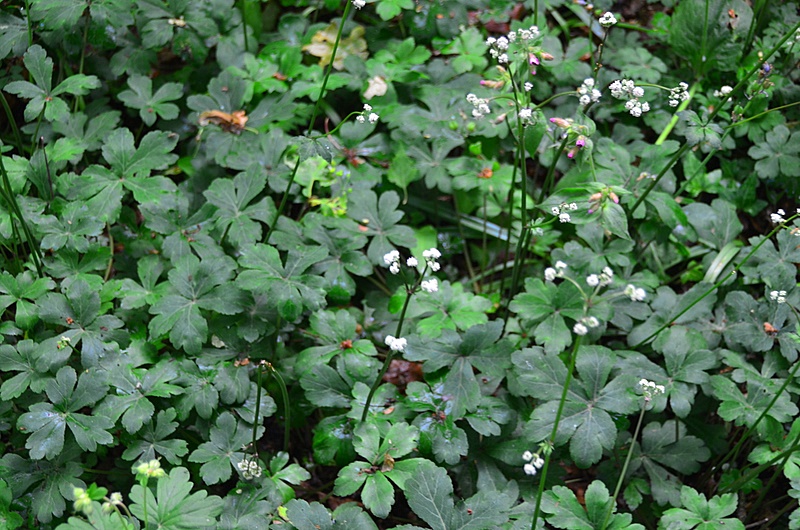 |  |  |   |  |
 |  |
Sanicle is a perennial plant, 20-50 cm tall, with a short taproot and many roots. The stem is erect, with sessile or on short petioles, small, numerous leaflets arranged alternately. The top itself is practically leafless.
Rhizome leaves on long petioles, ray-divided. With 3-5 inverted ovate leaves, with two-three radially divided lobes. The flowers are bisexual, small, white, rarely pale pink, located in cymes inflorescences, which change into head-shaped inflorescences. Fruit - a round testicle, which collapses into 2 one-seeded mericarps when mature. Blooms from May to July.
All parts of the plant have medicinal value. The above-ground part is collected during flowering, together with the rhizome leaves. For drying, hang the small bunches in a well-ventilated, shaded room. Roots with roots are dug in autumn, washed in running water and dried in the shade! In forced dryers, it is preferable not to exceed the temperature of 35C. Stored in ventilated packaging (paper bags). Storage period no longer than 1 year!
All parts of Sanicle contain saponins. Tannins and bitter substances, essential oils, organic acids, vitamin C, etc. have also been found
Medicinal significance
The medicinal properties of the Sanicle are based on its chemical composition. For example, pronounced expectorant properties are directly related to saponins, which are able to dissolve sputum, activate the function of the respiratory ciliated epithelium, bronchial peristalsis. The plant also has anti-inflammatory, bleeding-stopping, pain-relieving, diuretic and nervous system-strengthening properties.
In folk medicine, Sanicle is used as an expectorant, anti-bleeding, anti-inflammatory, covering, pain-relieving, diuretic and nervous system strengthening agent. In folk medicine, Sanicle is most often used for coughs, digestive disorders, painful menstruation, kidney bleeding and dysentery.
Sanicle is used to rinse the mouth, throat and gums in case of inflammation, as well as applications in case of skin inflammation. The plant is effective for skin tears, bruises and sprains. Licorice infusions and root decoctions are used in wound care.
The leaves are also used to make powders to treat boils.
